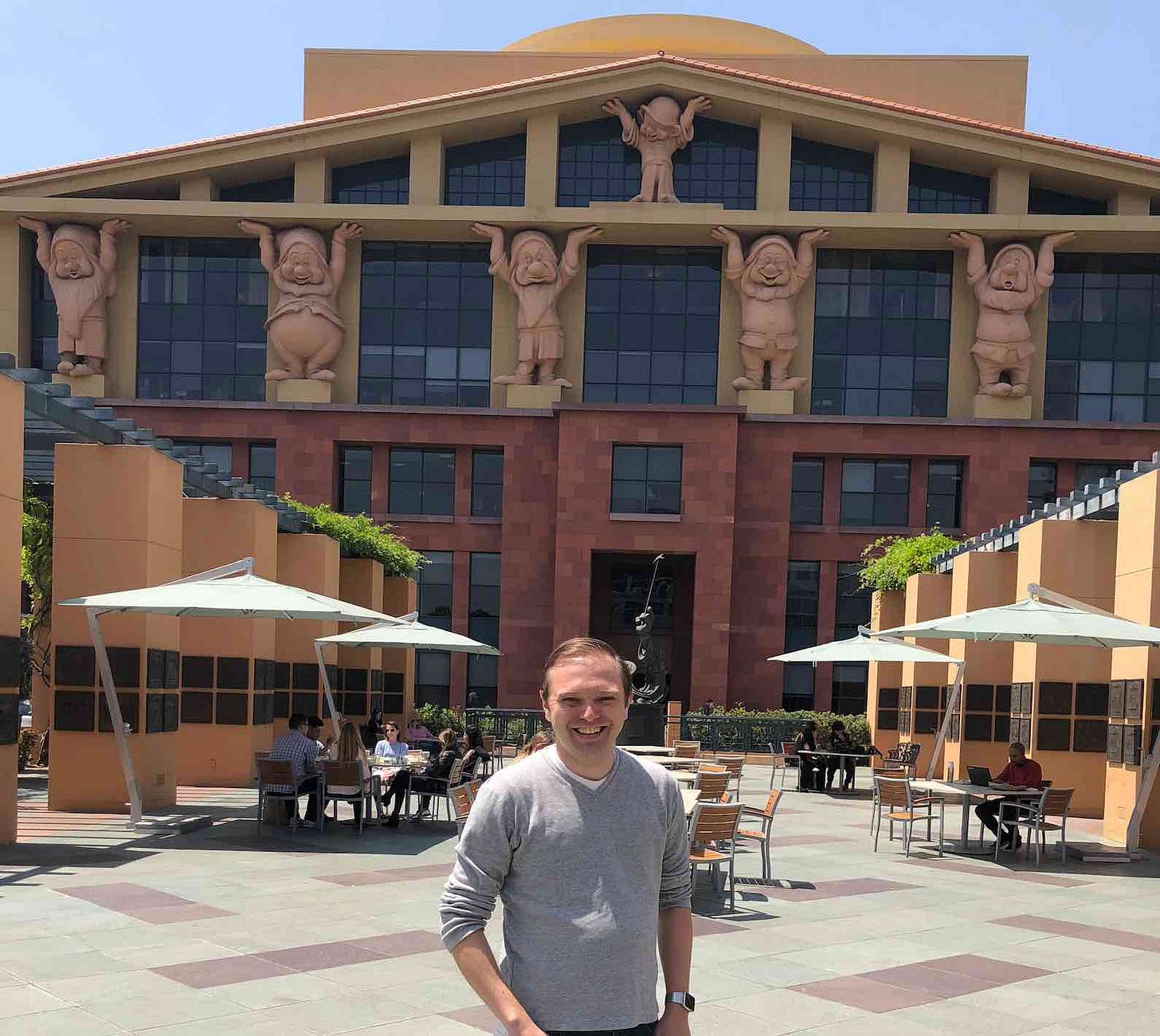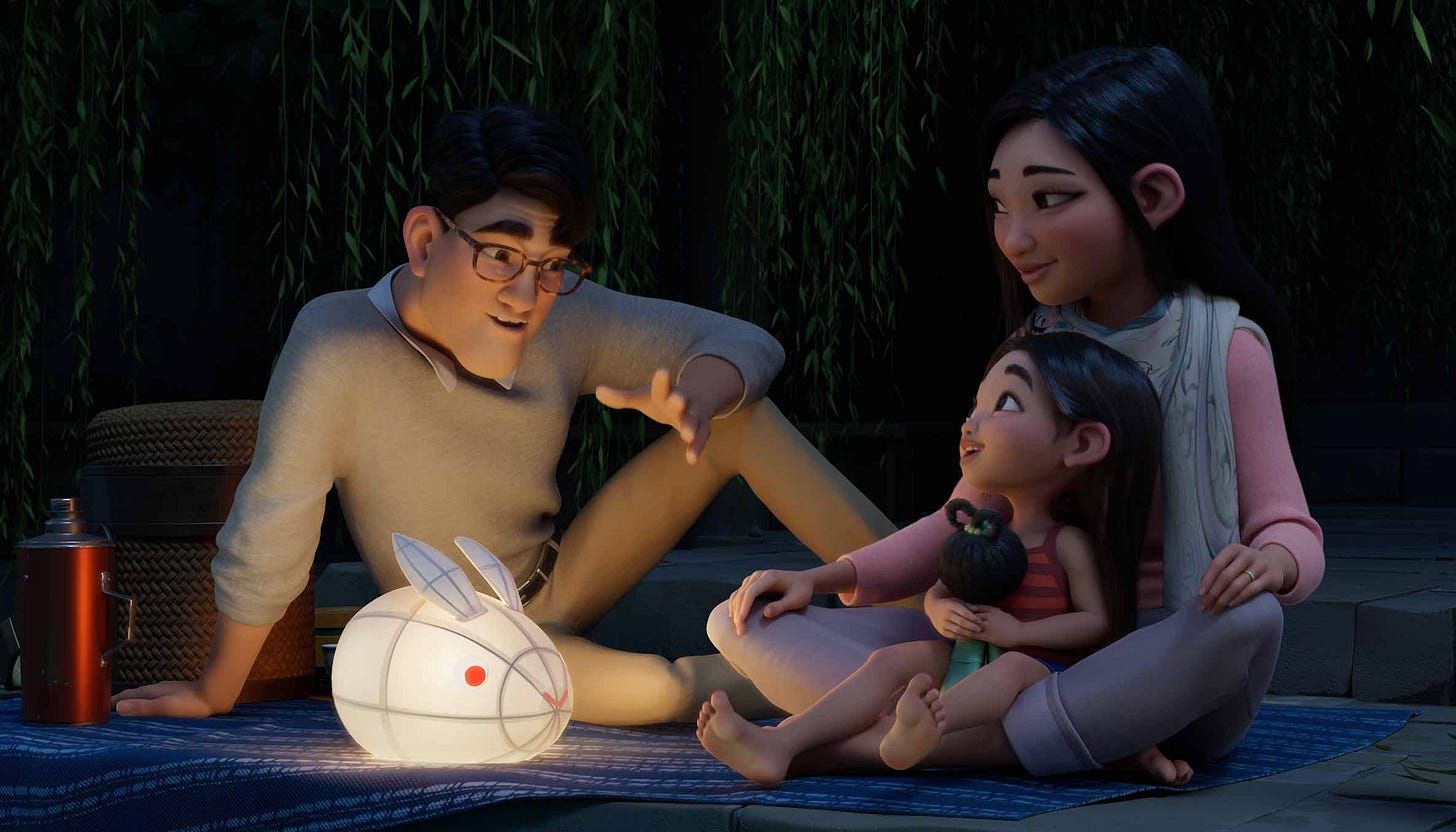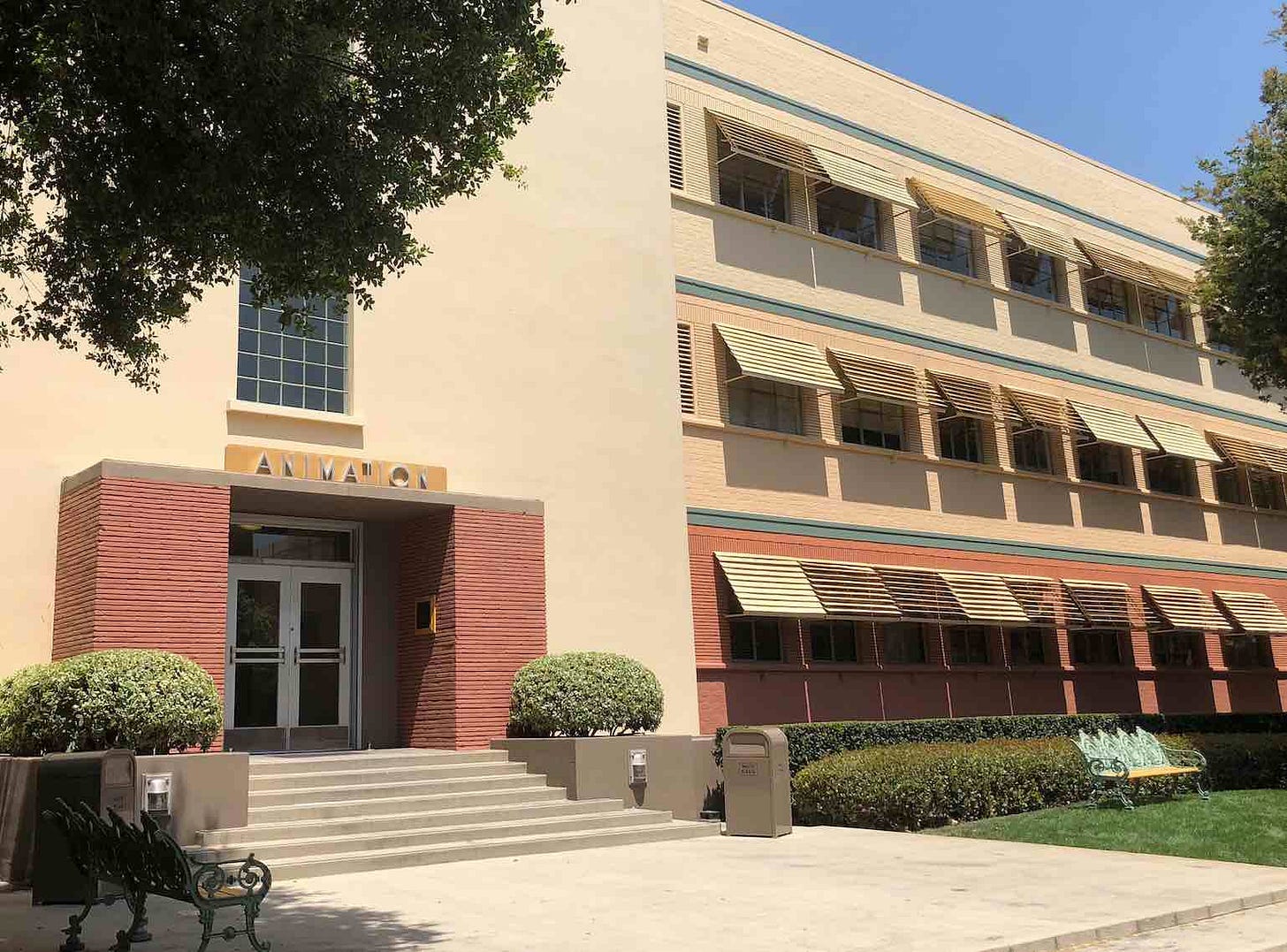Welcome to the Quarantine Creatives newsletter, a companion to my podcast of the same name. I hope you all had a safe Thanksgiving, despite all of the strangeness of 2020. As this is the season of giving thanks, I want you to know how grateful I am to you for reading this newsletter. Whether you’ve been with me since day one or if this is your first issue, welcome!
My Inner Child
If you’ve been listening to my show for a while, you have probably noticed that I am a Disney fan. I have spoken with two former Imagineers, Eddie Sotto and Tom K. Morris. I have also swapped Disney theme park fan stories with a number of guests, including Ginger Zee, John Tartaglia, and Joshua Turchin.
But my first love, long before I ever stepped foot in a park, was Disney Animation. I grew up watching classic films on video like Pinocchio and Snow White and the Seven Dwarves, but as I grew older, I became fascinated with how these films were made. I read books and watched as many specials as I could. I even briefly ran a Geocities site as a teenager where I would review the latest home video release from Disney. Thankfully, this was before webpages were archived and stored indefinitely, so you can’t find those reviews anymore (at least that I know of)! On this podcast, I interviewed RJ Fried, the EP of Our Cartoon President about how they animate that show.
I was so excited when my cousin, Rich Fallat, became an animator by trade more than a decade ago, and was even more awestruck when he was hired by Disney a few years ago, working on films like Moana and Ralph Breaks the Internet. One time when I was in Los Angeles, I was able to spend lunch with him on the Disney lot, eat in the studio commissary, walk the streets where Walt had walked, and get a tour of the sorcerer hat animation building, where Rich’s office is located.
All this is to say, I was beyond thrilled when I heard that Glen Keane agreed to an interview! Because of Thanksgiving, I only had one new show last week, so this newsletter will only cover my interview with Glen, but I will be back to two shows next week.
A Quick Plug…
Before we get into it, if you enjoy reading this newsletter or listening to my podcast, please consider using my Amazon shopping link when you do some of your holiday gift giving. Amazon will work in exactly the same way as it usually does and the cost to you doesn’t change, but by clicking on this link before you shop, a portion of your sale goes to help support Quarantine Creatives. Thank you!
Episode 56: Glen Keane
Glen Keane had a long career at Disney. He created and animated such beloved characters as Ariel, the Beast, Aladdin, Pocahontas, Tarzan, and Rapunzel, but he left the studio in 2012 to form his own animation house. His latest film Over the Moon premiered on Netflix last month and it is the first feature that Glen directed.
As a Filipino-American, one of the things that I loved about this film was that it was an Asian story (in this case, Chinese), voiced by Asian actors! It’s really exciting to see more stories geared towards a Western audience being told from Asian perspectives and having heroes that don't all fit the same mold. Here’s the trailer for Over the Moon:
Glen wasn’t intimated by the thought of directing a feature length animated film. In fact, he had been training for it for many years:
“I was taught by my mentors, Walt Disney called them his Nine Old Men, they referred to themselves as ‘directing animators.’ They would take sections of the movie and do design and animation, and work with the layout and the cinematography and recording, so that was how I learned animation. Through all of my career, I would take sequences of movies, like Ariel sings “Part of Your World,” so I [storyboard] that and I work with pretty much every aspect of that. But I didn’t have to worry about how the movie was going to get across the goal line. I just had to make sure my part worked.”
Of course, every director has a different management style. Glen articulated the approach that he brought to this project:
“The things that I was strong at, I could jump in and do. You know, like storyboarding, designing the characters, overseeing animation. All of those things were areas that I leaned into. And then I would fortify myself with other people who were really great at cinematography, and I have an incredible editor. Through my entire career, I’ve been mentoring others. But this time, it was reverse mentorship. I surrounded myself with people who were, in a lot of ways, smarter, better, they had great skills that I didn’t have and I relied heavily on them all the way through this.”
The film was in the final stages of production when the pandemic became serious back in March. Glen recalled getting the news that Netflix was suddenly closing the offices where he had a team of animators at work:
“Within an hour, everybody was gone. The coffee cups are still there, coats are still on the chairs. We have not been back. We were hundreds of people working at that point, up in Vancouver and here [Los Angeles]. There was this question of how are we going to do this? Is this possible? What amazed me was the desire of everyone to make it work, no matter what, somehow. And that has really been such a big part of moving forward is people just refusing to let this stop them.”
There was a scramble to ensure that every member of the team had the technology they needed to work remotely and could access secure servers located at the office where footage was stored. However, working remotely from an interpersonal standpoint was much easier to adapt to:
“We were already prepared for this, because I was directing in an office at Netflix, but we had people all around the world. I had what I called my window to the world monitor, and I would be talking to somebody in Spain, or Holland, or France, or Canada, or New York, or Shanghai. And you got used to connecting to people that way. I knew people’s idiosyncrasies, I knew the way creatively they would speak and how to interpret their ideas. That became so, so important when suddenly everything was blown up.”
Another way that the team needed to adapt was when it came to reviewing shots and offering notes. Without the ability to pop into each other’s offices or sit together in a screening room, Glen’s team had to use a workflow that would allow for remote feedback:
“We would have a moment where we would see it individually, because nothing was playing at the perfect speed. We would have it sent to each other and we’d have what’s called a SyncSketch, where we could watch the shots play, and I could do drawings over top of it. That would play in real time, but it would only play one shot at a time and we would have a whole group of us judging that.“
The script for Over the Moon was written by Audrey Wells, who passed away from cancer at age 58 in 2018. The story focuses on a young girl who has lost her mother and must grapple with what it means to move on. It’s a heavy script, made even more so with the knowledge that the message of moving through grief was deeply personal to Audrey. Glen recalled early story meetings with her where he could feel a childlike sense of awe to how she saw the world, and he tried to capture that in the film. After her death, the whole production rallied to honor her memory and ensure that this film was an expression of her values.
There are some strange parallels in Over the Moon and Glen’s film just prior to this, Dear Basketball, which was a short that looks at the basketball career of Kobe Bryant. Kobe worked closely with Glen on Dear Basketball, earning them both an Oscar in 2018. The film is not available right now, but there are some bootleg versions on YouTube, including the one below (it is low picture quality, but it gives you a sense of the film):
Of course, nobody could predict that soon after making this film, Kobe would be tragically killed in a helicopter accident. I asked Glen what it was like working on these two projects and the obligation that comes with them:
“I realized both these films were final messages, Over the Moon and Dear Basketball, and both these people were so passionate to communicate what they wanted, and yet you have to take it into yourself. It has to come from you. You can’t just be their hands doing it.”
I was not going to let Glen go without asking a few Disney questions too. When he started at Disney in 1974, many of Walt Disney’s original artists were still working there. I wondered what Glen’s first impression was of entering such a legendary place:
“I’ll never forget walking into the Animation Building for the first time. I was 20 years old. What hit me first was the smell of cigarettes, pencil shavings, and scotch. It was kind of this artistic incense. As soon as I walked in, it was like wow, this is a place for making art. This is a place where artists come and there is a level of expectation of a level of excellence, and I just got that from the smell of the place.”
Walt had a core group of animators that he referred to as his Nine Old Men. Eight of them were still working at the studio when Glen was hired. Ollie Johnston served as a major mentor, but Glen learned from all of them. He also heard some first-hand accounts of what Walt Disney was like:
“They talked about Walt like he was there. They would describe the way he would come in, that he was so sparing with any compliments. You never heard anything good about your work, except he would tell somebody else and then you would hear it from them, but never from Walt. The power he had in challenging and driving that team to excellence was really remarkable. He physically would drive artists at night to Chouinard Art Institute so that he could build that team so that they were able to do Snow White. The difference from those Silly Symphonies [cartoon shorts that Disney produced in the 1930s] to these features like Pinocchio and Bambi, that required great observation and anatomy. The kind of skills that people didn’t equate with animation. And Walt was driving them always to excellence. They always talked about ‘plussing.’ Every person that touched a shot had to make it better, you had to ‘plus’ it. And that came from Walt.”
I also wanted to ask Glen about how he developed characters, and I used the Beast from Beauty and the Beast as an example. That character is non-human and needs to display a range of emotions: menacing, foreboding, vulnerable, in love, in pain, etc, which required a very dynamic interpretation. I found the image above online, and it’s a great representation of a part of the interview where Glen talked about the various real world elements he combined to create a singular, mythical beast. That section is too long to include here in the newsletter, but I think it’s a great listen. He also had some general thoughts on creating a character:
“The design of a character, it’s a weird thing to say, but I believe the characters exist before you design them. I never would have said that because it sounds insane, but it’s been my experience. You might do hundreds of designs and people are going ‘that looks good.’ No, that’s not it. ‘What’s wrong with it?’ It’s just not them.”
I really hope you’ll take a listen to the full interview if you haven’t yet. Glen shares so much wisdom that goes beyond animation.
Further Reading:
Glen mentioned that he used to gift the book Art & Fear: Observations on the Perils (and Rewards) of Artmaking by Ted Orland to his colleagues. I have not read it, but after hearing him describe it, I added it to my reading list.
For more on Over the Moon, film critic Leonard Maltin recently published a book that looks at the art and filmmaking process.
For further reading on the Nine Old Men, there’s a great book by animator Andreas Deja and a more recent one by producer Don Hahn and Charles Solomon. Both are worth a look!
In terms of films, I recommend two documentaries that are both streaming on Disney+. Waking Sleeping Beauty looks at the state of Disney animation during the dark days of the early 80s, through the Renaissance period of the 90s. Glen appears in the documentary a few times, and it’s great background on the formative years of his career.
There’s also an older documentary streaming on Disney+ called Frank and Ollie that looks at two of Walt’s Nine Old Men, Frank Thomas and Ollie Johnston. Ollie was Glen’s mentor, and Glen is interviewed for this film too.
What’s Coming…
On Monday, I will be talking with HGTV star Mike Holmes about renovating and making TV during the pandemic. As a former producer at This Old House, I have a lot in common with Mike, and it’s fun to talk shop with him about the quality of workmanship, construction labor shortages, and sustainable building practices. We also talk about making TV of course.
On Thursday, I have a really fascinating conversation with Melody Thomas Scott, who has starred as Nikki Newman on The Young and the Restless for 41 years. We talk about working on a soap opera and also about some of the troubles that she encountered as a child actor raised by an abusive grandmother.
If you have questions, comments, thoughts, ideas, or anything else that you’d like to share, please feel free to email me anytime: hracela@mac.com
If you’re an Apple Podcasts user, please consider leaving a rating or review for Quarantine Creatives. It only takes a minute, but it helps bring in new listeners.
And please consider sharing this with a friend that you think might enjoy reading this, or better yet, share it on social media so you can tell hundreds of friends!
Stay Safe!
Heath









